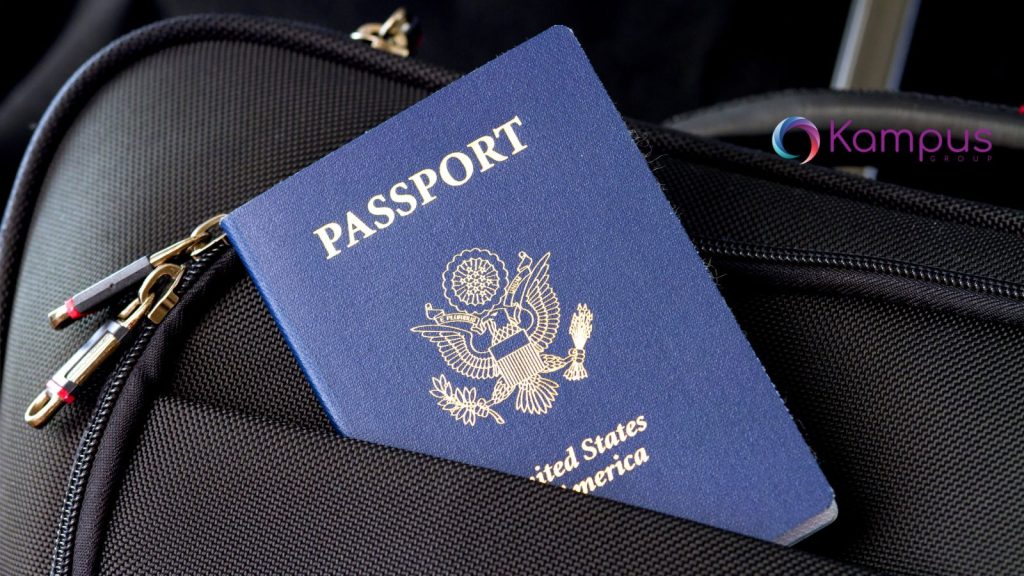Studying abroad is a dream for many students, but for most, the ultimate goal is to build a successful career overseas. The good news is that many countries allow international students to transition from a student visa to a work visa once they complete their studies. This move not only helps graduates gain international work experience but also sets them on a potential path to permanent residency.
In this guide, we’ll walk you through how the transition works in popular destinations like the USA, UK, Canada, Australia, Germany, and New Zealand.
Why Switch from a Student Visa to a Work Visa?
- Gain International Work Experience: Employers value graduates who have worked abroad.
- Earn and Support Yourself: Working full-time helps cover living expenses and possibly student loans.
- Pathway to Permanent Residency (PR): In many countries, work experience is a stepping stone to PR.
- Career Growth: Staying longer allows you to apply your academic knowledge in a real-world setting.
Country-Specific Pathways
United Kingdom
- Post-Study Work Route (Graduate Visa): Allows graduates to stay and work for 2 years (3 years for PhD students) after completing their studies.
- Switching to Skilled Worker Visa: If you secure a job with a licensed sponsor, you can switch to a Skilled Worker visa.
Start applying for jobs during your final semester to ensure a smooth transition.
United States
- OPT (Optional Practical Training): F-1 students can work for up to 12 months after graduation (STEM graduates may get a 24-month extension).
- H-1B Visa: After OPT, many students transition to H-1B through employer sponsorship.
Work closely with your university’s international office for OPT applications as deadlines are strict.
Canada
- Post-Graduation Work Permit (PGWP): Lets students work up to 3 years after completing a program of at least 2 years.
- Permanent Residency Pathways: Canadian work experience gained under PGWP can lead to Express Entry or Provincial Nominee Programs.
Ensure your school is a Designated Learning Institution (DLI) to qualify for PGWP.
Australia
- Temporary Graduate Visa (Subclass 485): International graduates can work for 2–4 years depending on qualification.
- Skilled Migration Pathways: Relevant work experience in Australia can help you apply for permanent visas.
Check if your course is on the Australian Skilled Occupation List, which can boost PR chances.
New Zealand
- Post-Study Work Visa: Lets graduates work for up to 3 years (depending on qualification level and location).
- Skilled Migrant Category: Work experience in New Zealand can help you transition to permanent residency.
Choose study programs in high-demand sectors (like IT, engineering, and healthcare) for better visa opportunities.
| Country | Student Visa Type | Post-Study Work Visa/Permit | Duration of Stay After Studies | Key Requirements for Transition |
|---|---|---|---|---|
| USA | F-1 Visa | Optional Practical Training (OPT) → H-1B Work Visa | OPT: 12 months (STEM: +24 months) → H-1B: up to 6 years | Secure employment with an H-1B sponsoring employer, apply for OPT within 90 days before graduation |
| UK | Student Route Visa (Tier 4) | Graduate Route Visa → Skilled Worker Visa | Graduate Route: 2 years (PhD: 3 years) → Skilled Worker: 5 years (renewable) | Apply before student visa expires, secure a job with an approved UK sponsor for Skilled Worker |
| Canada | Study Permit | Post-Graduation Work Permit (PGWP) → Express Entry PR | PGWP: up to 3 years → PR varies | Completed full-time course ≥ 8 months, apply within 180 days of graduation, meet PR eligibility |
| Australia | Student Visa (Subclass 500) | Temporary Graduate Visa (Subclass 485) → Employer-Sponsored or PR Visa | 2–6 years depending on qualification → PR varies | Completed eligible Australian qualification, meet English requirement, secure skilled job for PR |
| Germany | Student Visa | Job-Seeker Visa → EU Blue Card/Work Permit | Job-Seeker: 18 months → EU Blue Card: 4 years | Proof of degree from German university, sufficient funds during job search, employment offer for Blue Card |
| New Zealand | Student Visa | Post-Study Work Visa → Accredited Employer Work Visa | 1–3 years depending on qualification → AEWV: 3 years | Completed approved qualification, secure job with accredited employer for work visa |
Tips for a Smooth Transition
- Start early – Research your options at least 6–12 months before graduation.
- Stay updated – Immigration policies change frequently; always check official government websites.
- Network actively – Attend career fairs, connect with alumni, and seek internships during studies.
- Maintain visa status – Avoid overstaying your student visa while transitioning.
- Seek professional advice – Consider consulting an immigration advisor if unsure.
FAQs
Q1. Can I directly switch to a work visa after graduation?
Not always. In most countries, you must first apply for a post-study work permit before transitioning to a full work visa.
Q2. Which country is easiest for switching from student to work visa?
Canada and Australia are often considered the easiest due to flexible post-graduation work permits and clear PR pathways.
Q3. Can part-time work during studies count towards work visa requirements?
Usually no. Most countries require full-time skilled employment after graduation to qualify for work visas or PR.
Q4. Do I need a job offer to switch to a work visa?
Yes, in most cases (e.g., UK, USA, Germany, New Zealand), you’ll need a job offer from an eligible or accredited employer.
Q5. Can I bring my family if I switch to a work visa?
Yes, many countries (Canada, UK, Australia, New Zealand) allow dependents, but conditions vary by visa type.
With the right planning, your student journey abroad can smoothly turn into a professional career path.

